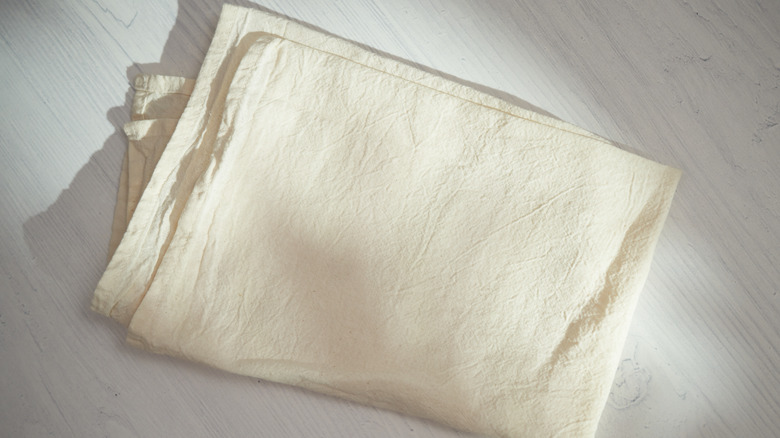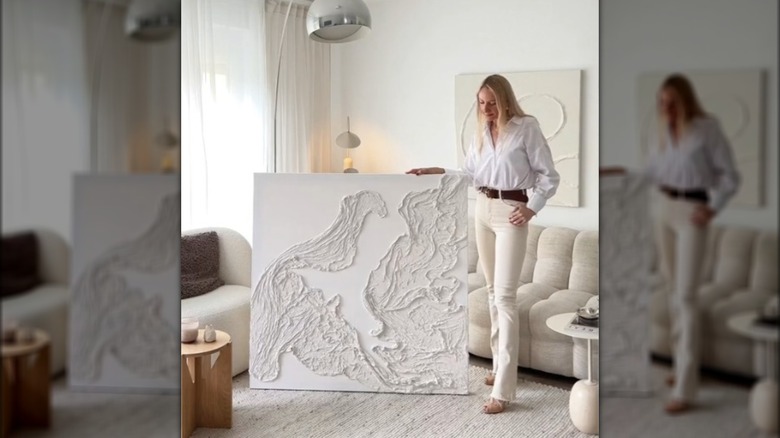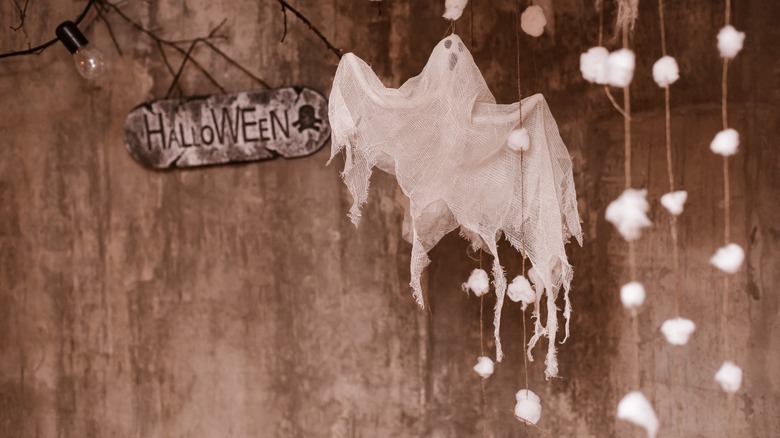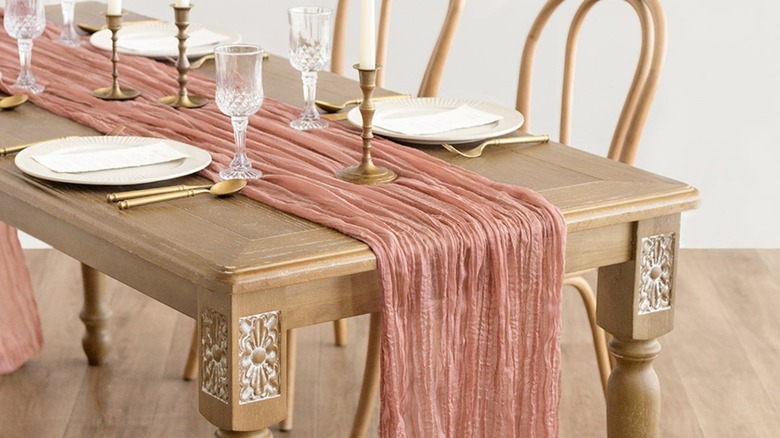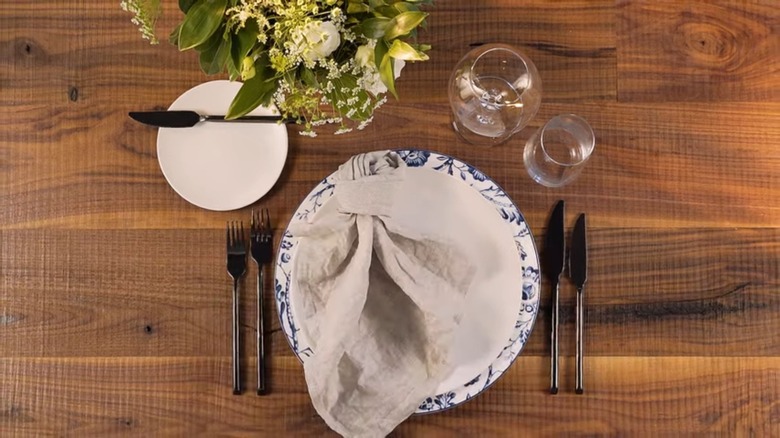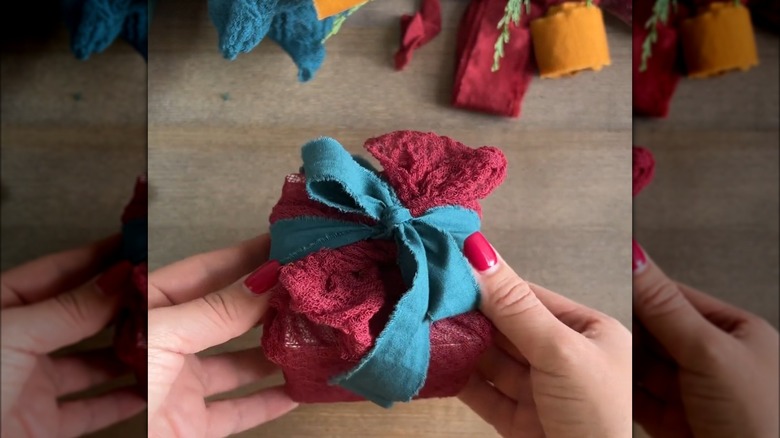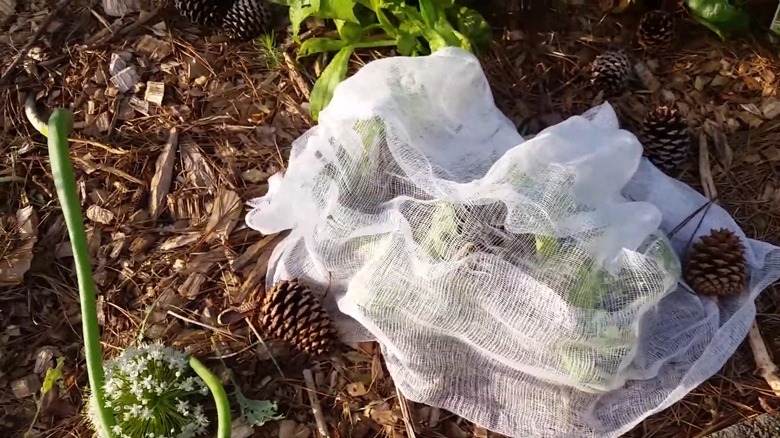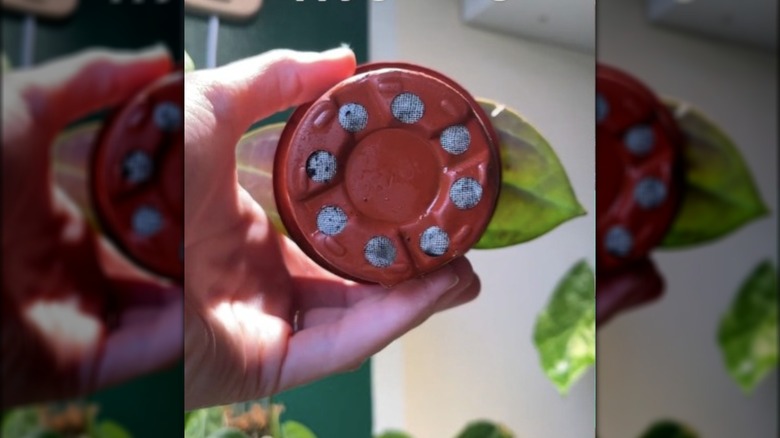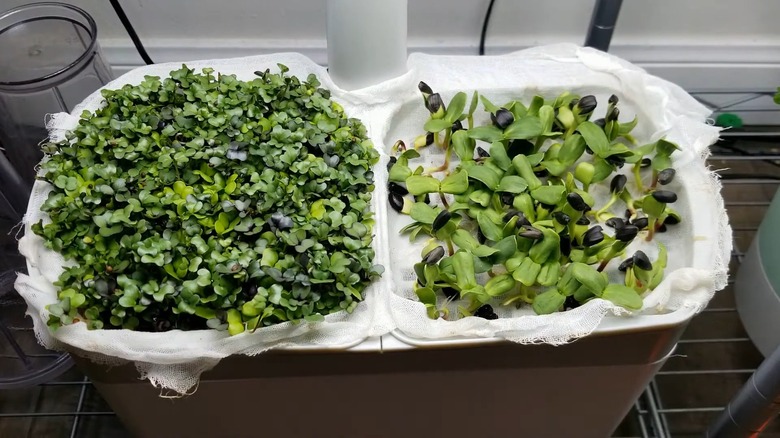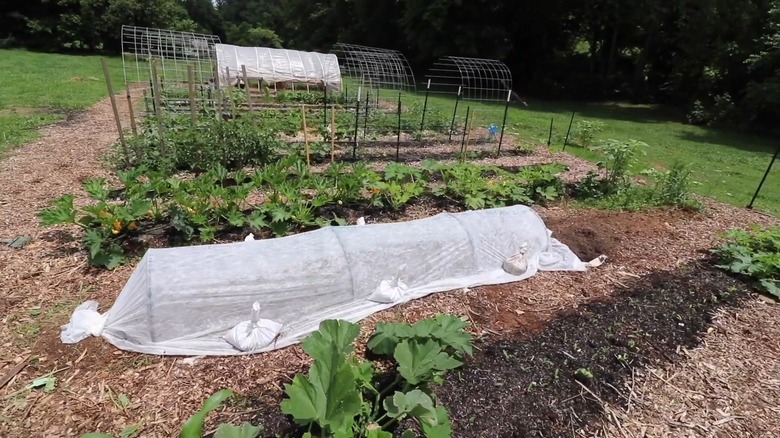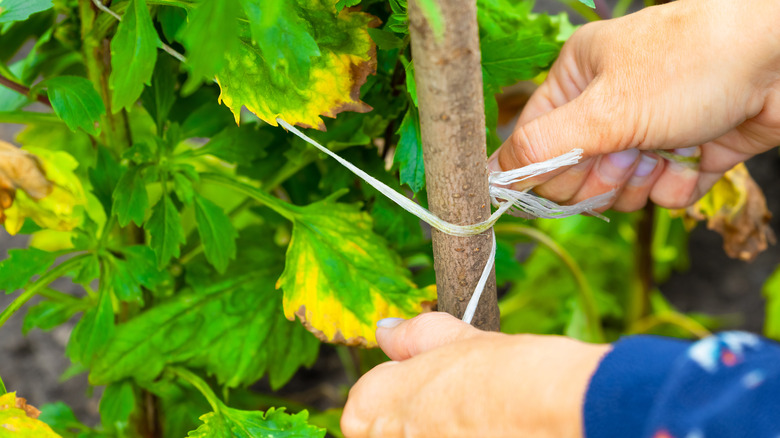10 Clever Ways You Can Repurpose Cheesecloth Around Your Home And Garden
The cheesecloth in your kitchen drawer can only be reused so many times. Eventually, wear and tear gains the upper hand and it's time to retire the gauzy cloth. But an old cheesecloth no longer suitable for cooking tasks still has lots of life left. The mesh kitchen tool is durable, malleable, and breathable, making it a stellar item to repurpose into accessories and decor. In fact, you'll be surprised by all the different ways you can repurpose cheesecloths around your home and yard.
Both new and used cheesecloths will work for these DIY upcycling projects. However, if you're going to buy any, ensure the fabric is 100% unbleached cotton. These cheesecloths are completely compostable, as opposed to bleached ones or those containing plastic fibers. It is also important to note that mesh with a higher thread count, like 90 or 100, will be sturdier than one with a lower count like 20 or 30. Cheesecloth is inexpensive, easy to use, and just one pack can be repurposed into several things.
Weave wall art
A cheesecloth might be better stored with your craft supplies than your kitchen tools. You can make abstract wall art by adhering the cheesecloth randomly to a canvas with paint or plaster. You can also shape the fabric into flowers, clouds, and all kinds of patterns for a more intentional design. It is an easy DIY that doesn't require any skill in studio art. The cheesecloth canvas is a stellar option for a large statement piece to hang above your headboard, or as an alternative to photographs inside picture frames. The artistic potential is endless.
Turn your home into a haunted house
During the spooky season, cheesecloths comes in handy as ghost decorations. This adorable Halloween decor DIY is budget-friendly and easy to create. The project is also versatile, as you can add faces and accessories to your ghost figurine. Hang the phantoms from ceilings or place them on tabletops. You can style the spooky characters inside your home and out to get in the holiday spirit. Cheesecloths also makes great faux webs to drape on windows or doorposts. This DIY is perfect for any ripped or battered cheesecloth no longer functional for its kitchen duties.
Elevate your dinner table decor
A table runner is a simple accessory that enhances any dinner table, and it turns out you can make one with a cheesecloth. A spool of kitchen gauze longer than your table is best for this DIY runner. However, tying, sewing, or gluing shorter pieces together to make one long cheesecloth runner also works well. Leave the fabric its natural beige shade for a simple look or dye the cloth any color to match the room's aesthetic. You can finish off the design with a centerpiece or just let the cheesecloth do all the talking.
Upgrade your napkins
Using the gauze as a napkin is another way a cheesecloth can upgrade your table setting. The woven cotton is a soft substitute to paper napkins and can be less expensive than standard fabric linens. Small pieces measuring roughly 18 to 20-inch squares are best. You can dye the cheesecloth to turn the tool into a statement-making accessory or keep its shade of white for a pristine look. For maximum pizzazz, tie the cheesecloth in a knot, add a ring, or bundle it with twine to style the napkin for your plate setting.
Give the gift of sustainability
Repurposing cheesecloth already gives you sustainability points, but reusing it as gift wrap is even more rewarding, as with each present, you're eliminating wrapping paper that just gets tossed in the trash (and also encouraging someone else to be eco-friendly). It's a two-in-one bonus because the recipient will have a lovely gift and cheesecloth they can reuse themselves. Similarly to the table runner and napkin DIY projects, you can dye the fabric to personalize the cheesecloth gift wrap. Stamps are perfect for customizations to match holidays seasons or create fun patterns.
Bug-proof your plants
Cheesecloths are also handy garden accessories. You can use cheesecloth as a defense against grasshoppers, caterpillars, beetles, and other pests that like to feed on your plants. Simply drape the kitchen gauze over each crop to create a barrier that the insects won't be able to cross. Secure it with stakes or rocks to keep the cloth from running away with the wind. The mesh fabric will limit the critters' access to your plants, but still allow the crop to get the sunlight and water it needs.
Modify planters with large drainage holes
Oftentimes, plant pots have drainage holes that are too large. Soil falls through them and water drains too quickly, or on the other hand, soil can clog the holes cutting off filtration. Putting a sheet of cheesecloth at the bottom of the container before layering in the soil can solve all of these issues. The mesh acts like landscaping fabric to keep the dirt in and let the water out slowly, helping the soil retain more moisture. You can use the cheesecloth in a variety of containers like seed starting pots, large planters, and raised garden beds.
Grow microgreens
It is easy to grow and care for microgreens, and you can have a microgreen garden inside your home thanks to a sheet of cheesecloth. The unbleached cotton fabric acts as a growing medium for the mini plants, similar to how microgreens are grown on coconut coir or hemp mats. The cheesecloth threads are fine enough for the plant roots to poke through and the material retains moisture to help the seeds sprout. Further, after you harvest your plants, you can clean the cheesecloth and reuse it to grow more greens.
Fashion homemade row covers
Instead of buying a row cover for your garden, you can make one out of cheesecloth. The fabric will not only protect your plants from insects, but it can provide shade to keep the greenery from getting sunburned and shield the crop from harsh winds. You can even drape multiple layers of cheesecloth on top of each other to strengthen the fort around your crops. Air, water, and sunlight will still be able to get through and nourish your plants. It is a simple way to protect your garden from the elements or transition houseplants outside for the spring and summer.
Support your plant babies
Another foolproof method for repurposing cheesecloth around your garden is using it to tie plants. You can cut the fabric into thin strips and tie baby stems to stakes, or tie vines to train them to grow in a particular direction. Cheesecloth is also useful for supporting stems with heavy fruits and vegetables. You can fashion a support sling from the kitchen gauze. The cheesecloth hammock will take some pressure off of the stems and hold up the large produce. One pack of cheesecloth can go a long way inside and outside your home.
